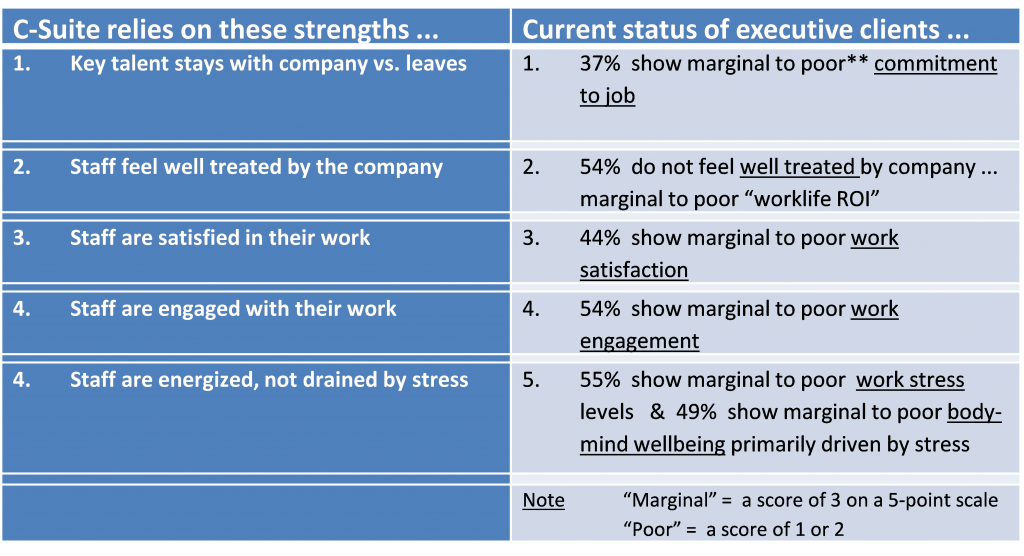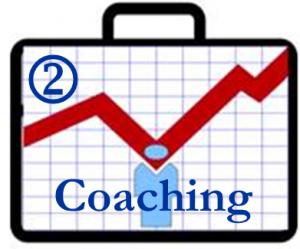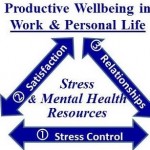Toolkit #2: Coaching executives, professionals, team managers, and key staff
Since 1995, the Institute’s “Execulife” staff have coached hundreds of leading executives, professionals and entrepreneurs through the crossroads and choices that hallmark their personal and career success.
AIMS: Our Coaching Toolkit prepares and certifies Coaches to enable executives, professionals and entrepreneurs:
⊕ To preserve and grow their “Can Do – Will Do” Wellbeing .. and
⊕ To consistently provide “Let’s Make It Work” leadership with their staff .. by
♦ Clarifying priorities … and overcoming obstacles,
♦ Growing stronger by more skillfully confronting their life challenges, and
♦ Targeting and then reaching new levels of performance & satisfaction
.. as they navigate in a turbulent business climate and organizational change
Our 2008-19 research with 28,410 executive clients using our Vitality PRO™ online profile highlights these as the highest rated priorities for executive development.

The Coaching Toolkit builds on the strengths and reduces the risks observed in this group .. both for their on-the-job Wellbeing and in their capacity for A+ Leadership. Focused by VitalityPro™ with each client, our Toolkit yields an individualized Rx to focus progress. Based in our 2008-19 research findings, coaching strategy is typically designed around two or three of the success factors in boxes “A” and “B” below.
Sidebar: Since personal / family life is also a “work in progress” for both executives and professionals, they often report that the self-management skills they develop with us for their working life are readily transferable to marriage and parenting.
Toolkit Applications The five most frequent practice-building scenarios are:
1) Basic 5-session Vitality PRO™ coaching engagement to:
⊕ Clarify the client’s top three priorities for reducing risks and building on strengths highlighted in their VitalityPro™ diagnostic report
⊕ Select their most motivating and realistically achievable Priority #1
⊕ Understand in the client’s terms how Priority #1 is a recurrent obstacle to their more positive “life ROI” and A+ performance
⊕ Establish compelling motivation to take action [including signs of stress-driven difficulties plus their self-portrait of “better” Life ROI
⊕ Based on their Vitality PRO™ list of personalized Action Recommendations, identify their action-focused solution strategy for performing and being “better”
⊕ Identify several opportunity-situations for more skillful action
⊕ Plan and rehearse several actions [W5 + H criteria]
⊕ Client’s reporting re actions taken, success factors and obstacles > refine strategy or skillful actions
⊕ Build on, consolidate and appreciate signs of progress
⊕ Agree to conclude the coaching re Priority #1; or to continue with their Priority #2; and to schedule “tune-up” sessions
2) Integrate “Basic” [above] with a company’s Executive Development program
3) “Hi-ROI” executive program of (a) One-hour group briefing, followed by (b) Two 1-hour individual coaching sessions
4) Referrals by HR or self-referral of one-off challenging cases
5) Integrate “Basic” to complement medical treatment [if you understand MD’s treatment focus]
Tools: included in your Toolkit-for-Coaching are four 2-hour AV-recorded coach training sessions led by Richard Earle, Ph.D. Toolkit topics are addressed in this sequence:
![]() Features & benefits of Vitality PRO™ Coaching >> Marketing your coaching practice & client engagement
Features & benefits of Vitality PRO™ Coaching >> Marketing your coaching practice & client engagement
![]() Evidence-based roots; conceptual model; diagnostic tool > focus and progress tracking
Evidence-based roots; conceptual model; diagnostic tool > focus and progress tracking
![]() Leading edge features attractive to users
Leading edge features attractive to users
![]() High-level recording form to guide coaching process > client action > outcomes
High-level recording form to guide coaching process > client action > outcomes
![]() Key ingredients in the coaching process which make “common sense” for executives and professionals as clients [e.g. “my Life ROI”]
Key ingredients in the coaching process which make “common sense” for executives and professionals as clients [e.g. “my Life ROI”]
![]() Criteria executives and professionals use to define / evaluate success in the coaching process
Criteria executives and professionals use to define / evaluate success in the coaching process
![]() Emphasis on small-bite, building block, strategically motivating actions to create behavioral change
Emphasis on small-bite, building block, strategically motivating actions to create behavioral change
![]() The power of motivated actions <> self-discovery / self-creation
The power of motivated actions <> self-discovery / self-creation
![]() Understanding client “motivation” and how to surface & leverage it to make even difficult changes achievable
Understanding client “motivation” and how to surface & leverage it to make even difficult changes achievable
![]() Managing the power of the four participants in one-to-one coaching: I.E. the power of the problem … of the client … of the VitalityPro™ coaching process … and of the coach
Managing the power of the four participants in one-to-one coaching: I.E. the power of the problem … of the client … of the VitalityPro™ coaching process … and of the coach
![]() The diagnostic Vitality PRO™ online profile focuses each client’s step-by-step coaching roadmap
The diagnostic Vitality PRO™ online profile focuses each client’s step-by-step coaching roadmap
![]() Understanding of and comfort with Institute’s 3-factor model for managing stress / mental – emotional health: 1 Stress Control <> 2 Satisfaction <> 3 Engaged Relationships
Understanding of and comfort with Institute’s 3-factor model for managing stress / mental – emotional health: 1 Stress Control <> 2 Satisfaction <> 3 Engaged Relationships
![]() This 3-factor model guides the coach as diagnostician and as facilitator of the coaching process
This 3-factor model guides the coach as diagnostician and as facilitator of the coaching process
![]() Vitality PRO™ “consultation form” provides a shared roadmap in coaching process
Vitality PRO™ “consultation form” provides a shared roadmap in coaching process
![]() Transparent roadmap guiding Vitality PRO™ coaching creates mutual confidence and efficient use of time [illustrated in Institute’s “brief coaching family physicians course” … accredited by College of Family Physicians of Canada in 2014]
Transparent roadmap guiding Vitality PRO™ coaching creates mutual confidence and efficient use of time [illustrated in Institute’s “brief coaching family physicians course” … accredited by College of Family Physicians of Canada in 2014]
![]() How-to steps in core 5-session coaching template [50-60 minutes / session with client] .. may be expanded or shortened per circumstances
How-to steps in core 5-session coaching template [50-60 minutes / session with client] .. may be expanded or shortened per circumstances
![]() In-person and online coaching options
In-person and online coaching options
![]() Selecting then engaging two pilot test clients to test-drive the coaching template
Selecting then engaging two pilot test clients to test-drive the coaching template
Consultation / Debrief with Dr. Earle re Vitality PRO™ coaching with two pilot test clients [selected by you]
♦ To support the coach’s comfort, confidence and effectiveness and
♦ To guide an online debriefing interview to provide Institute certification for the coach
Pricing and Administrative
• Pricing: (a) Certification in the Coaching Toolkit is licensed at $2800.00 [US] / coach. and (b) Certified coaches may purchase the Toolkit’s frontend diagnostic profile, Vitality PRO™, at a Reseller discount of 20% of MSRP; Volume-based pricing is available
• Trainer prerequisites: Minimum of 30% of professional time in providing individual or group-based coaching or counseling during the past two years, or equivalent
• Inquiries re Toolkit details / Toolkit licensing: Contact Margaret Dopson, MA.Sc., Director, Distance Training at mdopson@stresscanada.org




